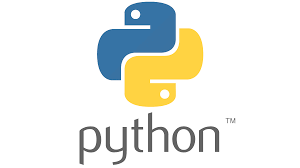
There may be times when you need to execute a block of code several times. A loop statement allows us to repeat a statement or group of statements. To handle looping requirements, the Python programming language provides the following types of loops.
for loop:
Sequential traversal is accomplished with for loops. This loop repeats a code block and shortens the code that manages the loop variable.
Syntax:
for value in sequence:
#code block where value is used to hold the value of every item present in the sequence before the iteration begins until this particular iteration is completed. Loop iterates until the final item of the sequence are reached.
For instance,
n = 10
for i in range(0, n):
print(i)Output:
0
1
2
3
4
5
6
7
8
9Example 2:
List=[1,2,4,8,16,32,64,128]
for i in range(0, len(List)):
print (List[i])Output:
1
2
4
8
16
32
64
128Example 3:
List=[[2, 4, 6], [3, 6, 9], [ 4, 8, 12], [5, 10, 15], [6,12,18]]
for i in List:
for k in i:
print ("Element of list within a list - ", k)Output:
Element of list within a list - 2
Element of list within a list - 4
Element of list within a list - 6
Element of list within a list - 3
Element of list within a list - 6
Element of list within a list - 9
Element of list within a list - 4
Element of list within a list - 8
Element of list within a list - 12
Element of list within a list - 5
Element of list within a list - 10
Element of list within a list - 15
Element of list within a list - 6
Element of list within a list - 12
Element of list within a list - 18while loop:
In Python, while loops are used to iterate until a condition is met. The statement in the program that follows the while loop, on the other hand, is executed once the condition changes to false.
Syntax:
while condition:
# execute these statements
else:
# execute these statementsExample:
count = 0
# Iterating through the while loop
while (count < 10):
count = count + 2
print(count) # Executed until condition is met
else:
print("while condition false")Output:
2
4
6
8
10
while condition falseSingle statement while Block:
As shown below, the loop can be declared in a single statement. This is similar to the if-else block where the code can be written in a single line.
count = 0
while (count < 6): print("Hello") Loop Control Statements:
The execution of loop control statements differs from the normal sequence. All automatic objects created in that scope are destroyed when execution leaves that scope.
Python provides the following control statements:
| Statement | Description |
| Break | This command ends the loop’s execution and moves control to the statement following the loop. |
| Continue | This command skips the current loop iteration. Once the Python interpreter reaches the continue statement, the statements following it are not executed. |
| Pass | The pass statement is used when a statement is required but no code is to be executed. |
Example of continue:
# Prints all letters except 'a' and 't'
for letter in 'RabeccaFatima':
if letter == 'a' or letter == 't':
continue
print ('Current Letter :', letter)
var = 10
Output:
Current Letter : R
Current Letter : b
Current Letter : e
Current Letter : c
Current Letter : c
Current Letter : F
Current Letter : i
Current Letter : mExample of break:
# Prints all letters except 'c'
for letter in 'RabeccaFatima':
if letter == 'c':
break
print ('Current Letter :', letter)
Output:
Current Letter : R
Current Letter : a
Current Letter : b
Current Letter : eExample of pass:
for letter in 'RabeccaFatima':
pass
print ('Last Letter :', letter)Output:
Last Letter : aNote: also read about Python – if, elif, else Conditions
Follow Me
Please follow me to read my latest post on programming and technology if you like my post.
https://www.instagram.com/coderz.py/
https://www.facebook.com/coderz.py
Staying up to the mark is what defines me. Hi all! I’m Rabecca Fatima a keen learner, great enthusiast, ready to take new challenges as stepping stones towards flying colors.
Leave a Comment
You must be logged in to post a comment.